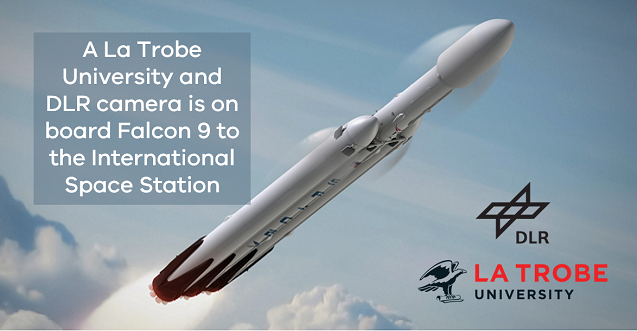A partnership between La Trobe University and the German Aerospace Agency has developed an advanced high-resolution camera which will more accurately monitor the earth's ecosystem. That camera is now on its way to the International Space Station on Space X's Falcon 9 rocket.
The camera will take three days to reach the International Space Station, where it will be integrated onto the station’s imaging platform to monitor bushfires, floods, ash clouds, storms, rainfall, and drought across the world.

Once installed, the camera will transmit data to the School of Engineering and Mathematical Sciences at La Trobe and to ESS Weathertech – a Melbourne-based company specialising in designing and manufacturing satellite ground stations, who have established a ground station to receive imagery.
The partnership between La Trobe and the German Aerospace Centre is the first of its kind for an Australian university and demonstrates Victoria’s capabilities in developing and manufacturing space technology.
With one in five Australian space-related science and technology companies based here, we are well positioned to coordinate national and international collaboration on space and attract global investment.
Some of the world’s biggest names in aerospace – including Lockheed Martin, Thales, Boeing and BAE Systems – carry out aerospace research, development and manufacturing here in Victoria.
The global space industry is forecast to be worth more than $1 trillion by 2040. Victoria can help boost Australia’s share of this market to tens of billions of dollars, potentially creating 20,000 jobs across the country.
La Trobe University is very much at the forefront of space technology – this project cements Victoria’s position as world-leader for space research and engineering. This is a ground-breaking achievement for engineering in Australia and will help governments and emergency services world-wide.
Dr Peter Moar
Senior Lecturer and Entrepreneur in Residence, La Trobe Engineering



